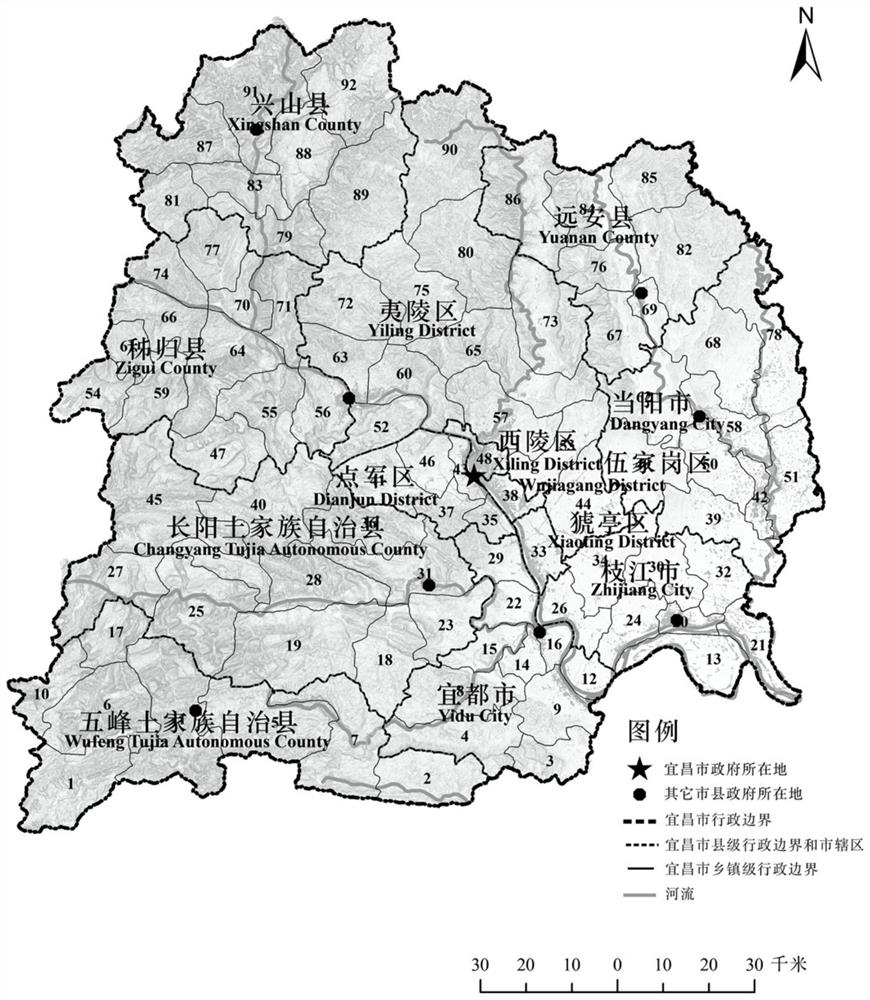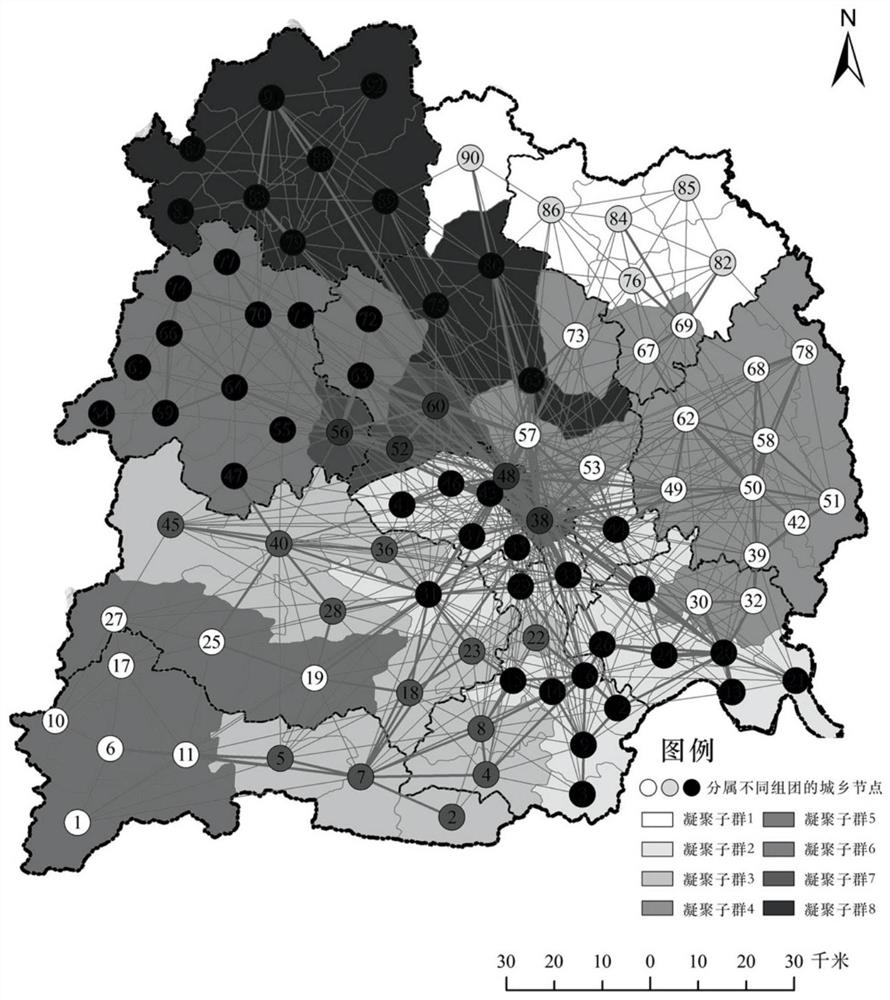Urban and rural infrastructure system collaborative planning method based on population flow data
An infrastructure, urban and rural technology, applied in the field of collaborative planning of urban and rural infrastructure systems based on population flow data, can solve the problems that planning cannot accurately reflect the needs of the objective world, unreasonable allocation of public resources, and insufficient infrastructure utilization, etc., to achieve fast and accurate Daily spatio-temporal selective behavior, abundant population flow data, and the effect of promoting coordinated development
- Summary
- Abstract
- Description
- Claims
- Application Information
AI Technical Summary
Problems solved by technology
Method used
Image
Examples
Embodiment Construction
[0056] The present invention will be further described through specific embodiments below in conjunction with the accompanying drawings. It should be understood that these embodiments are only used to illustrate the present invention and are not intended to limit the scope of the present invention. After reading the present invention, those skilled in the art all fall within the appended claims of the present invention to the amendments of various equivalent forms of the present invention. limited range.
[0057] The urban-rural infrastructure system collaborative planning method based on population flow data of the present invention is realized by constructing a multi-layer nested network model including an urban-rural association network and a multi-element association network. First, through the social network analysis method, the urban-rural relational network is divided into cohesive subgroups to obtain closely connected groups. On this basis, determine the node level an...
PUM
 Login to View More
Login to View More Abstract
Description
Claims
Application Information
 Login to View More
Login to View More - R&D
- Intellectual Property
- Life Sciences
- Materials
- Tech Scout
- Unparalleled Data Quality
- Higher Quality Content
- 60% Fewer Hallucinations
Browse by: Latest US Patents, China's latest patents, Technical Efficacy Thesaurus, Application Domain, Technology Topic, Popular Technical Reports.
© 2025 PatSnap. All rights reserved.Legal|Privacy policy|Modern Slavery Act Transparency Statement|Sitemap|About US| Contact US: help@patsnap.com



